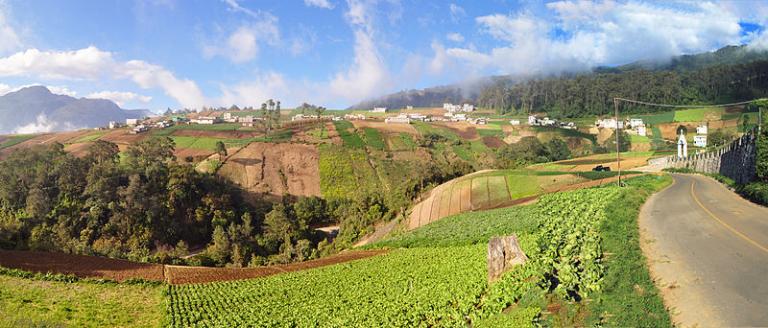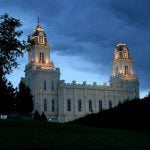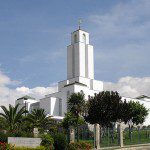
My mind has obviously been on Pre-Columbian America for the past week and a half, so I thought that I would call attention to this article, which I published in the Deseret News on 7 February 2018:
Many members of The Church of Jesus Christ of Latter-day Saints are excited about an exclusive National Geographic article that appeared online at news.nationalgeographic.com on Feb. 1, 2018, by Tom Clynes, titled, “Laser Scans Reveal Maya ‘Megalopolis’ Below Guatemalan Jungle: A vast, interconnected network of ancient cities was home to millions more people than previously thought.”
Their excitement is both understandable and justified.
The article discusses a laser technology known as LiDAR, which stands for light detection and ranging, that has revealed previously undiscovered ancient ruins by digitally removing the tropical forest canopy of northern Guatemala that conceals them. Using this “major breakthrough” in Maya archaeology, researchers have thus far identified artificial features, including more than 60,000 houses, palaces and roads that have been hidden for centuries. “After decades of combing through the forests,” writes Clynes in National Geographic, “no archaeologists had stumbled across these sites.”
Plainly, a great deal remains to be learned about Pre-Columbian America, and several new findings here seem relevant to the Book of Mormon.
For example, according to Mosiah 7:4 and 8:8 — not to mention my own personal experience — it’s easy to lose cities in the Mesoamerican jungle and to walk, wholly unaware, past massive structures.
But they exist, though they’re difficult to see: Contrary to previous population estimates of around 5 million, Tulane University archaeologist Francisco Estrada-Belli says that the ancient Guatemalan lowlands may have supported 10-15 million people. “At its peak in the Maya classic period (approximately A.D. 250–900),” summarizes National Geographic, “the civilization covered an area about twice the size of medieval England, but it was far more densely populated.”
Thus, when Mormon’s father brought him southward to the capital district of Zarahemla in roughly A.D. 321-326, the 11-year-old future prophet was wide-eyed with astonishment: “The whole face of the land had become covered with buildings, and the people were as numerous almost, as it were the sand of the sea” (see Mormon 1:7).
In the National Geographic article, Clynes describes “highways connecting urban centers and quarries.” “Virtually all the Mayan cities,” he says, “were connected by causeways wide enough to suggest that they were heavily trafficked and used for trade and other forms of regional interaction. These highways were elevated to allow easy passage even during rainy seasons.”
Similarly, 3 Nephi 6:8 records that “there were many highways cast up, and many roads made, which led from city to city, and from land to land, and from place to place.” (Does the verb “cast up” suggest that Nephite highways were “elevated”?)
The National Geographic account speaks of “militarization” and “the ubiquity of defensive walls, ramparts, terraces and fortresses.”
“Warfare wasn’t only happening toward the end of the civilization,” says Ithaca College archaeologist Thomas Garrison. “It was large-scale and systematic, and it endured over many years.”
For its part, the Book of Mormon is notoriously full of warfare. At Alma 49:2-8; 50:1-6; 53:1-5; and 62:42-43, for instance, we read of innovative fortifications built during the first century B.C. Ultimately, the Nephites are destroyed around A.D. 385, but the fighting continues:
“The Lamanites have hunted my people, the Nephites, down from city to city and from place to place,” Moroni reports somewhere between A.D. 400-421, “even until they are no more; and great has been their fall; yea, great and marvelous is the destruction of my people, the Nephites. And behold, it is the hand of the Lord which hath done it. And behold also, the Lamanites are at war one with another; and the whole face of this land is one continual round of murder and bloodshed; and no one knoweth the end of the war” (see Mormon 8:7-8).
None of this proves the Book of Mormon true, of course. But it’s certainly consistent with the book’s historical narrative. And it bears further watching:
“LiDAR is revolutionizing archaeology the way the Hubble Space Telescope revolutionized astronomy,” says Estrada-Belli. “We’ll need 100 years to go through all (the data) and really understand what we’re seeing.”
So far, National Geographic notes, the project has covered 800 square miles (2,100 square kilometers) of the Maya Biosphere Reserve, in Guatemala’s Petén region, producing the largest LiDAR data set ever obtained for archaeological research. Mayanists hope, though, that they will have mapped more than 5,000 square miles (14,000 square kilometers) of the heavily forested Guatemalan lowlands within three years.
For further information on LiDAR and the Maya — readable, and with an explicit Mormon connection — see “King of the Jungle: The Mayan Empire of Archaeologist Richard Hansen: On the trail with the man who discovered the preclassic Mayan civilization” online at weeklystandard.com.
Posted from Puno, Peru











